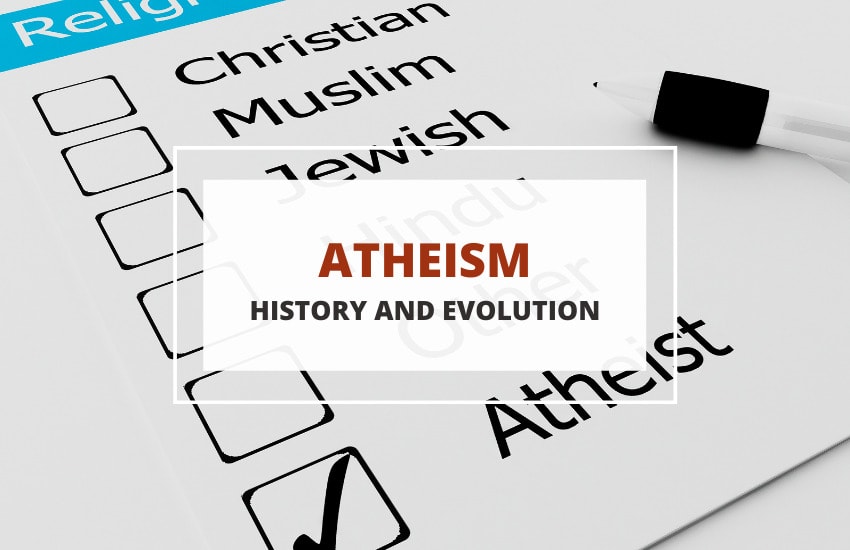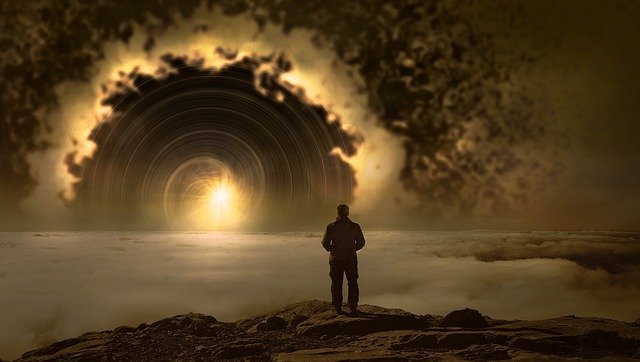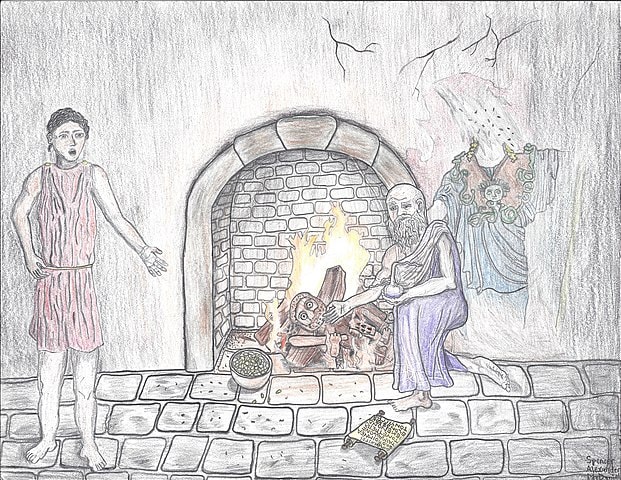
Table of Contents
Atheism is a concept with many different meanings, depending on who you ask. In a way, it’s almost as varied as theism. It’s also one of the fastest growing movements, with this article by the National Geographic calling it the world’s newest major religion. So, what exactly is atheism? How can we define it and what does it encompass? Let’s find out.
The Trouble with Defining Atheism
For some, atheism is the complete and utter rejection of theism. In that way, some view it as a belief system in and of itself – the belief that there is no god.
Many atheists oppose this definition of atheism, however. Instead, they pose a second definition of atheism, one that’s arguably more accurate to the term’s etymology – a-theism, or “non-belief” in Greek, from where the term originates.
This describes atheism as a lack of belief in god. Such atheists don’t actively believe that a god doesn’t exist and recognize that there are too many gaps in humanity’s knowledge of the universe to pose such a hard statement. Instead, they simply pose that the evidence for god’s purposed existence is lacking and they, therefore, remain unconvinced.
This definition is also disputed by some, many of whom are theists. The issue they have is that, for them, such atheists are simply agnostics – people who neither believe nor disbelieve in a god. This, however, isn’t accurate, as atheism and agnosticism are fundamentally different – atheism is a matter of belief (or lack thereof) while agnosticism is a matter of knowledge since a-gnosticism literally translates as “lack of knowledge” in Greek.
Atheism vs. Agnosticism

As the famous atheist and evolutionary biologist Richard Dawkins explains it, theism/atheism and Gnosticism/agnosticism are two different axis that separate 4 different groups of people:
- Gnostic theists: Those who believe a god exists and believe they know he exists.
- Agnostic theists: Those who acknowledge they can’t be certain a god exists but believe, nonetheless.
- Agnostic atheists: Those who acknowledge they can’t be certain a god exists but don’t believe he does – i.e., these are the atheists that simply lack a belief in god.
- Gnostic atheists: Those who outright believe a god doesn’t exist
The latter two categories are also often called hard atheists and soft atheists although a wide variety of other adjectives are also used, most of them carrying the same distinction.
Igtheism – A Type of Atheism
There are many types of additional “types of atheism” that are often unknown. One that seems to be rising in popularity, for example, is igtheism – the idea that god is definitionally incomprehensible, so igtheists can’t believe in him. In other words, no definition of a god presented by any religion makes logical sense so an igtheist doesn’t know how to believe in a god.
An argument you’ll often hear from an igtheist, for example, is that “A spaceless and timeless being cannot exist because “to exist” is to have dimensions in space and time”. Therefore, the proposed god cannot exist.
In essence, igtheists believe that the idea of god – or at least any idea of god presented so far – is an oxymoron so they don’t believe in one.
Origins of Atheism
But where do all these different types and waves of atheism originate from? What was the starting point of this philosophical movement?
It’s impossible to pinpoint an exact “starting point of atheism”. Similarly, an attempt at tracking the history of atheism will essentially mean listing various famous atheists through history. That’s because atheism – however you choose to definite it – doesn’t really have a starting point. Or, as Tim Whitmarsh, Professor of Greek Culture at the University of Cambridge puts it, “Atheism is as old as the hills”.
Simply put, there have always been people who didn’t believe in the purposed deity or deities in their society. In fact, there are entire societies who never even developed religion of any kind, at least not until they were conquered by another civilization and had the invader’s religion imposed upon them. One of the few remaining purely atheistic peoples in the world are the Pirahã people in Brazil.

Another example from history are the Huns – the famous nomadic tribe led by Attila the Hun into Europe in the mid-5th century AD. Funnily enough, Attila was also known as God’s Whip or The Scourge of God by those he conquered. The Huns themselves, however, were indeed atheistic as far as we know.
As they were a nomadic people, their broad “tribe” was comprised of multiple smaller tribes they had swept up along the way. Some of these people were pagans and not atheists. For example, some believed in the ancient Turko-Mongolic religion Tengri. By and large, however, the Huns as a tribe were atheistic and didn’t have a religious structure or practice of any sort – people were just free to worship or disbelieve whatever they wanted.
Still, if we are to trace the history of atheism, we do need to mention some famous atheist thinkers from throughout history. Fortunately, there are many of them. And, no, they don’t all come from after the Enlightenment period.
For example, the Greek poet and sophist Diagoras of Melos is often cited as the world’s first atheist. While this, of course, isn’t factually accurate, what made Diagoros stand out was his strong opposition to the ancient Greek religion he was surrounded by.

One anecdote about Diagoras, for example, claims that he once toppled over a statue of Herakles, lit it on fire, and boiled his lentils over it. He’s also said to have revealed the secrets of the Eleusinian Mysteries to the people, i.e., the initiation rites performed every year for the cult of Demeter and Persephone at the Panhellenic Sanctuary of Eleusis. He was eventually accused of asebeia or “impiety” by the Athenians and was banished to Corinth.
Another famous ancient atheist would be Xenophanes of Colophon. He was influential in the establishment of the school of philosophical skepticism called Pyrrhonism. Xenophanes was instrumental in founding the long line of philosophical thinkers such as Parmenides, Zeno of Elea, Protagoras, Diogenes of Smyrna, Anaxarchus, and Pyrrho himself who eventually started Pyrrhonism in the 4th century BCE.
The prime focus of Xenophanes of Colophon was a critique of polytheism, rather than theism in general. Monotheism hadn’t yet been established in ancient Greece. However, his writings and teachings are accepted as some of the earliest written major atheistic thoughts.
Other famous ancient atheists or critics of theism include the Greek and Roman philosophers such as Democritus, Epicurus, Lucretius, and others. Many of them didn’t explicitly deny the existence of a god or gods, but they largely denied the concept of an afterlife and put forward the idea of materialism instead. Epicurus, for example, also claimed that even if gods exist, he didn’t think they had anything to do with human beings or had any interest in life on Earth.
In the Medieval period, prominent and public atheists were few and far between – for obvious reasons. The major Christian churches in Europe didn’t tolerate any form of disbelief or dissent, and so most people who doubted the existence of god had to keep that notion to themselves.
What’s more, the church had a monopoly on education at the time, so those who would be educated enough in the realms of theology, philosophy, or the physical sciences to question the concept of a god were members of the clergy themselves. The same applied to the Islamic world and it’s very difficult to find an outspoken atheist during the Middle Ages.

One figure that’s often mentioned is Frederick II, the Holy Roman Emperor. He was the King of Sicily during the 13th century AD, a King of Jerusalem at the time, and Emperor of the Holy Roman Empire, ruling large parts of Europe, Northern Africa, and Palestine. Paradoxically, he was also excommunicated from the Roman church.
Was he really an atheist?
According to most, he was a deist, meaning someone who believes in a god mostly in an abstract sense but doesn’t believe such a being is actively meddling in human affairs. So, as a deist, Frederick II frequently spoke out against the religious dogma and practices of the time, earning himself an ex-communication from the church. This is the closest the Middle Ages came to having an outspoken anti-religious figure.
Outside of Europe, Africa, and the Middle East, and looking into the Far East, atheism becomes a more complicated topic. On the one hand, in both China and Japan, the emperors were typically viewed as gods or representatives of god themselves. This made being an atheist for large periods of history as dangerous as it was in the West.
On the other hand, some describe Buddhism – or at least certain sects of Buddhism such as Chinse Buddhism, as atheistic. A more accurate description is pantheistic – the philosophical notion that the universe is god and god is the universe. From a theistic point of view, this is barely distinguishable from atheism as pantheists don’t believe that this divine universe is a person. From an atheistic standpoint, however, pantheism is still a form of theism.

In Europe, the Enlightenment period, followed by the Renaissance and the Victorian era saw a slow resurgence of open atheistic thinkers. Still, to say that atheism was “common” during those times would still be an overstatement. The church still had a hold over the law of the land in those periods and atheists were still persecuted. However, the slow spread of educational institutions led to some atheist thinkers gaining their voices.
Some examples from the Age of Enlightenment would include Spinoza, Pierre Bayle, David Hume, Diderot, D’Holbach, and a few others. The Renaissance and Victorian eras also saw more philosophers embracing atheism, whether for a short period of time or throughout their lifetimes. Some examples from this age include the poet James Thompson, George Jacob Holyoake, Charles Bradlaugh, and others.
However, even as recently as the late 19th century, atheists throughout the Western world were still facing hostility. In the US, for example, an atheist wasn’t allowed serve on juries or testify in court by law. The very printing of anti-religious texts was considered a punishable offense in most places even at that time.
Atheism Today
In modern times, atheism was finally allowed to flourish. With the advance of not just education but also of science, the refutations of theism became as numerous as they were varied.
Some atheistic scientists you’ve probably heard of include people such as Philip W. Anderson, Richard Dawkins, Peter Atkins, David Gross, Richard Feynman, Paul Dirac, Charles H. Bennett, Sigmund Freud, Niels Bohr, Pierre Curie, Hugh Everett III, Sheldon Glashow, and many more.
Broadly speaking about half of the international scientific community today identifies as religious and the other half – as an atheist, agnostic, or secular. These percentages still vary greatly from country to country, of course.
And then, there are the many other famous artists, writers, and public figures such as Dave Allen, John Anderson, Katharine Hepburn, George Carlin, Douglas Adams, Isaac Asimov, Seth MacFarlane, Stephen Fry, and others.
There are entire political parties in the world today that identify as secular or atheistic. The Chinese Communist Party (CCP) is openly atheistic, for example, which theists in the Western world often cite as a “negative” example of atheism. This glosses over the question, however, of whether the issues western theists have with the CCP are caused by its atheism or by its politics. For the most part, the reason the CCP is officially atheistic is that it replaced the former Chinese Empire which honored its emperors as gods.
Additionally, there are numerous other atheist politicians in the Western world as well, most of them members of the various Labor or Democratic parties. Western atheistic politicians do continue to face electability challenges to this day, especially in the US where theism still has a strong hold. Nevertheless, the public even in the US is slowly shifting toward different forms of atheism, agnosticism, or secularism with each passing year.
Wrapping Up
While it’s hard to get exact rates of atheism, it’s clear that atheism continues to grow each year, with the ‘not religious’ becoming a form of identity. Atheism still continues to cause controversy and debate, especially in highly religious countries. However, today, being an atheist isn’t as dangerous as it once was, when religious and political persecution often dictated the very personal experience of a person’s spiritual beliefs.









